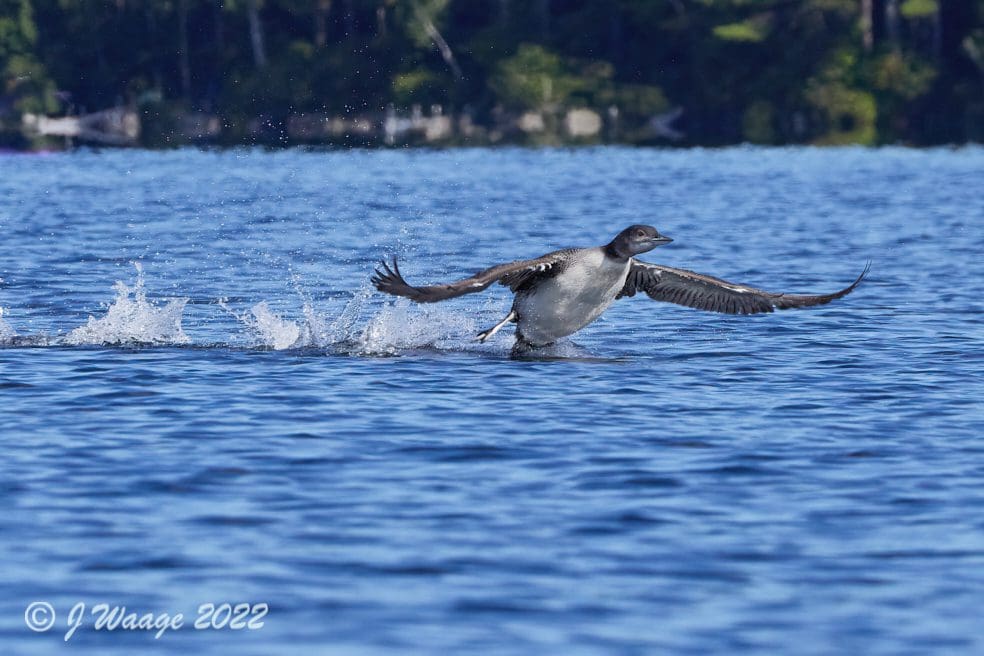Flying Loons and Useful Wasps
Update on the Loons
Prosper now has full juvenile plumage, bill shape and size.
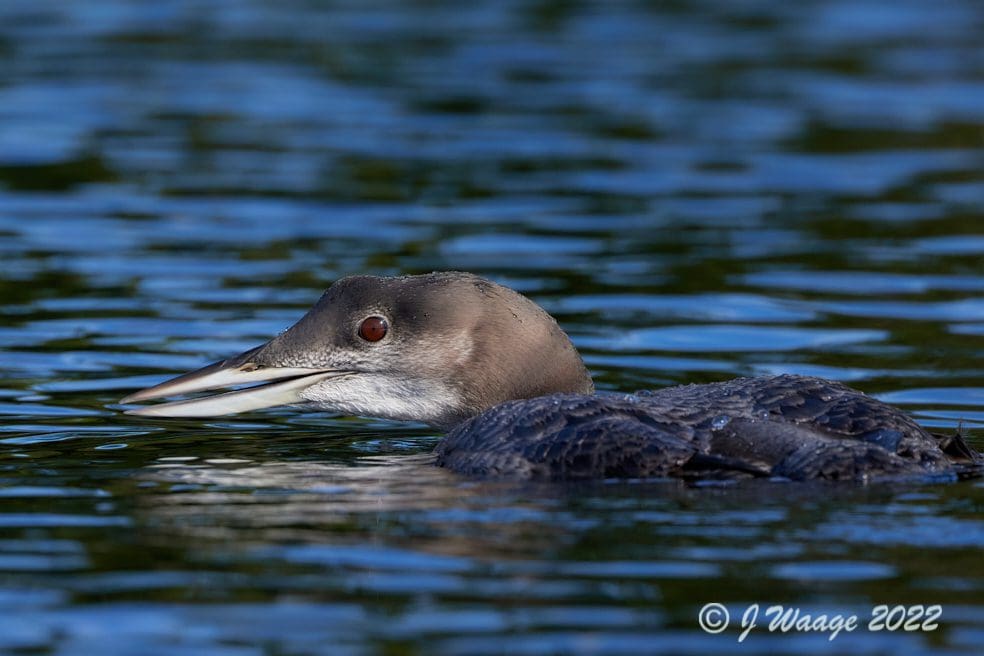
Despite being able to dive for over a minute and grab prey, Prosper still continually begs for food. Our remarkable Loon parents, along with Prosper, are foraging further out into the Lake and are underwater for extended periods of time. Please be watchful when boating; they can pop up unexpectedly.
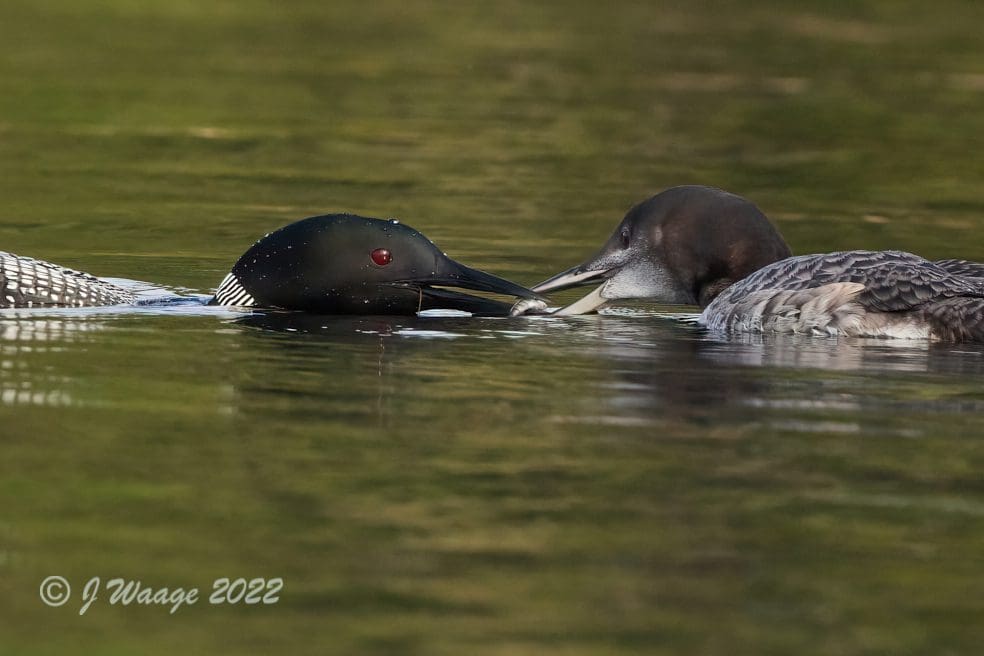
Prosper has started practicing take-offs,
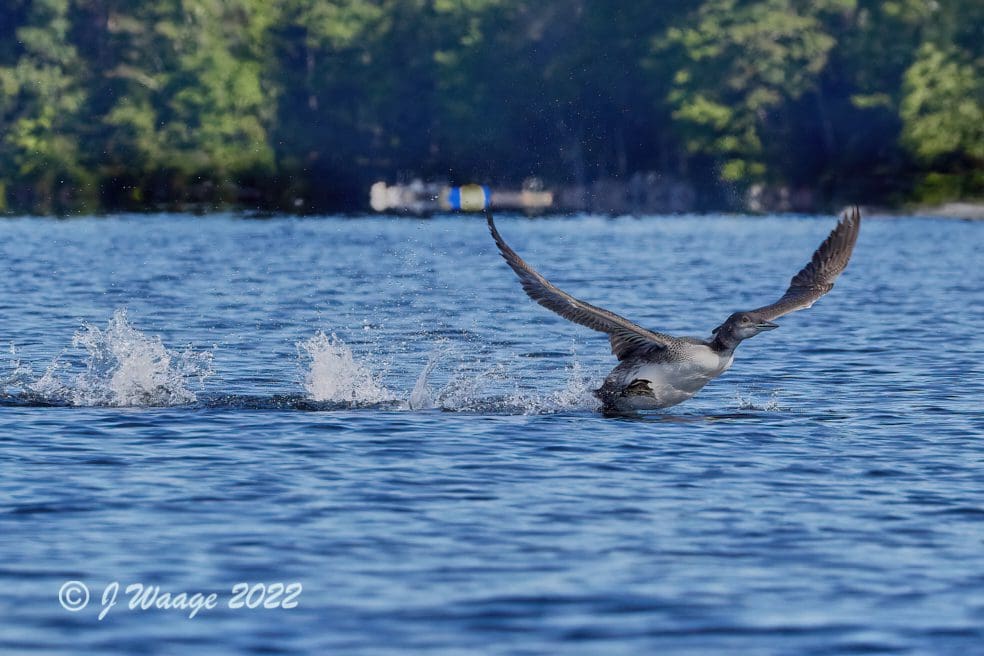
… and “flaps up” landings, building up strength for full flight.
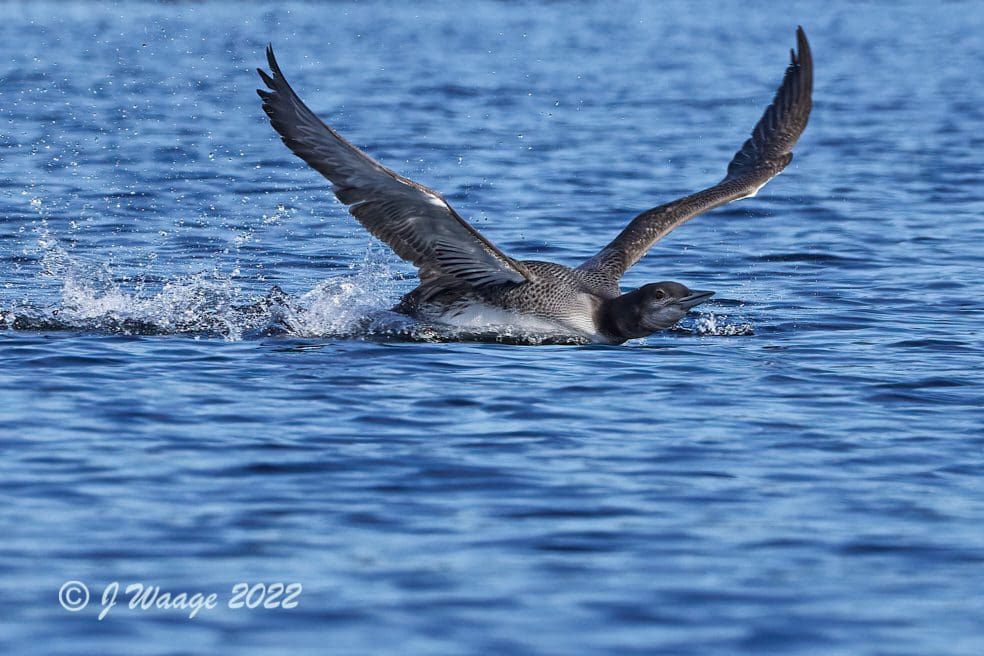
Ta-dah!!

Wasps: Pests or Pest Removers?
For many people, wasps are insects to avoid and get rid of. Yet they are among the most important agents for controlling insect pests! There are at least 150,000 species worldwide and the vast majority of those are small to tiny parasitoids. Parasitoids lay one or more eggs in a host insect which the wasp larvae then consume. They are extremely important bio-control agents.
Two larger parasitoid wasps are shown below. On the left is one of tens of thousands of Ichneumon Wasp species that parasitize insects all over the World.
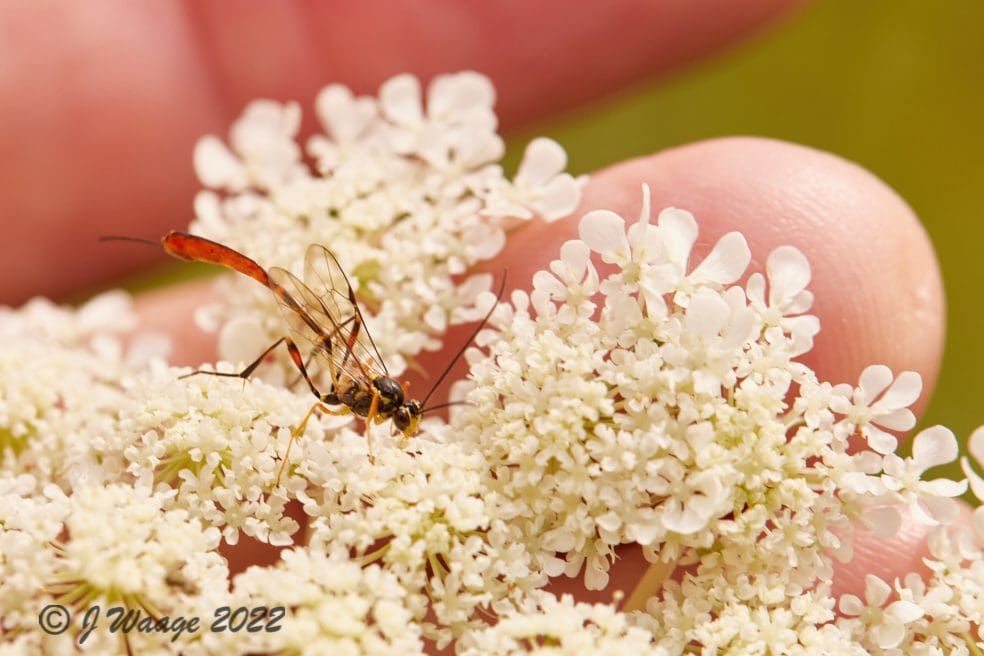
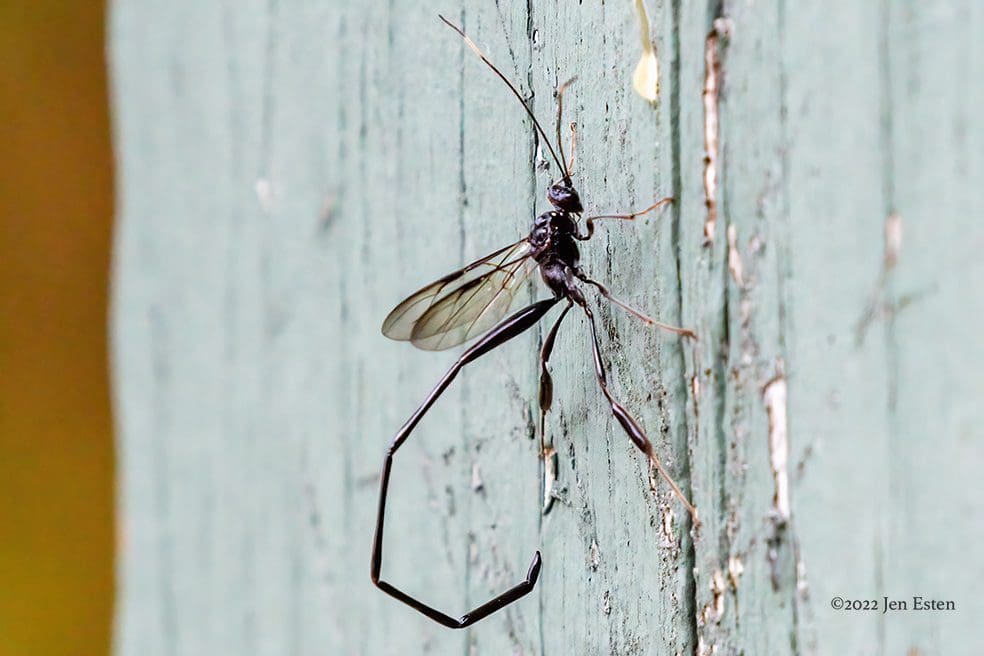
On the right is a scary looking Pelecinid Wasp (2-3″) that is a major parasite on June Beetles and completely incapable of stinging you or its prey. Using its long abdomen to probe the soil for beetle grubs, it lays an egg on the grub.
However, when we think of wasps, we usually refer to the highly social subgroup of Vespid Wasps (about 1,000 species worldwide), like the Yellow Jacket below.

They and Hornets (below) are prone to stinging anything that comes too near their nests. Yet they are also major pollinators and very effective at removing caterpillars and other garden pests.
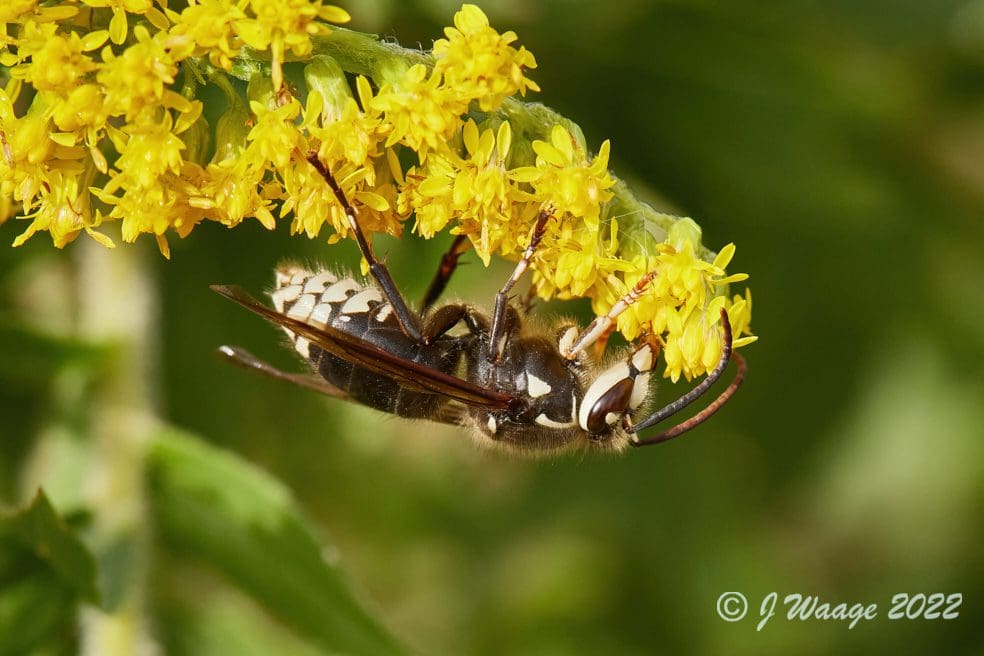
Social Vespid wasps feed their larvae regurgitated insect flesh, relying on nectar for most of they own food. They build “paper” nests of chewed plant fiber above and below ground. The presence of one of these nests near a door or in the yard is always of concern.

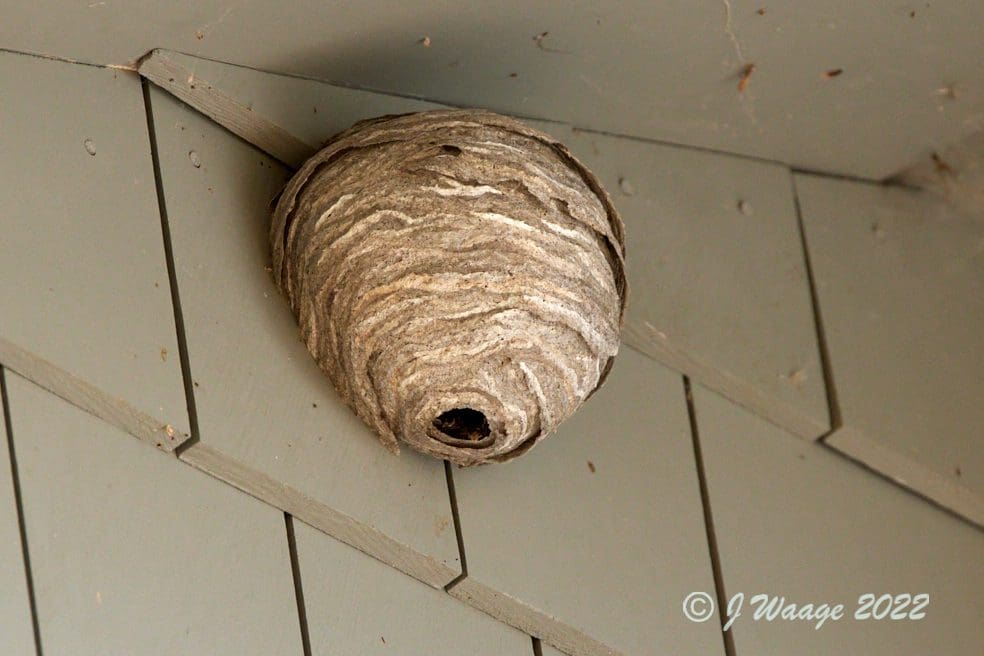
Above are two Vespid nests made of plant fiber that people often want removed from their yards. The one on the right is a Hornet nest and not something you want close to a house or a place where children play.
The other (left), is a nest of a Paper Wasp (Polistes) – usually an uncovered disk of cells attached by a stalk to a ceiling or under a step. Like Hornets and Yellow Jackets, Polistes wasps (below) have a modified ovipositor (egg laying tube) plus venom and can sting if directly bothered. However, they do not defend their nests as readily as Hornets, Yellow Jackets and Bees.
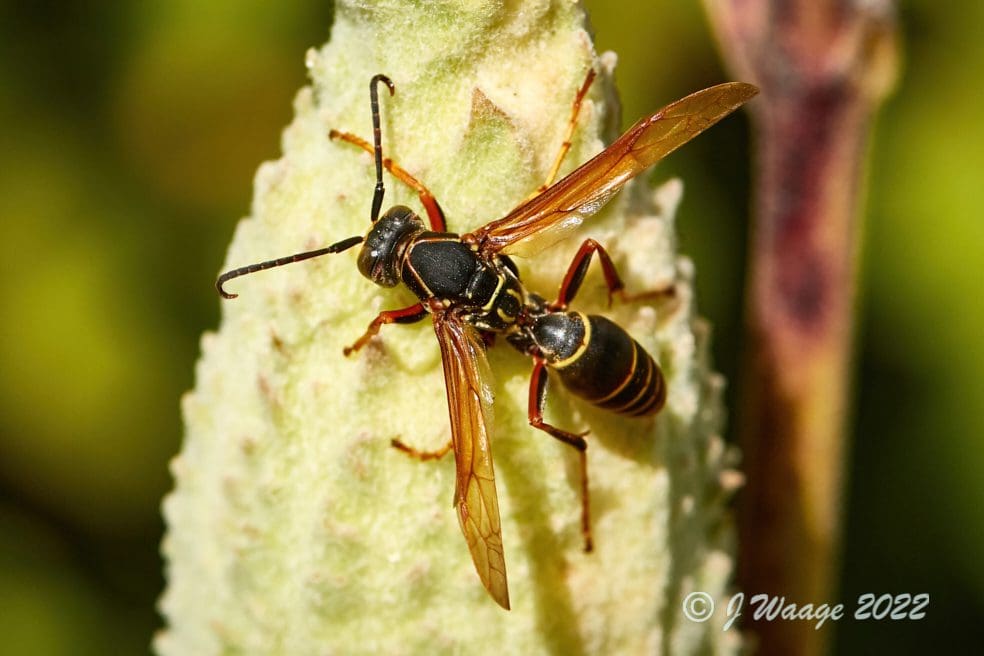
The vast majority of times a wasp stings something it is to subdue or paralyze an insect prey. One group of wasps that are specialists at feeding their young paralyzed insects are the solitary Sand Wasps (often called Thread-Waisted Wasps). These are relatively large wasps – most over an inch long and some up to 2″. They won’t sting you unless you grab them. They use their stinger to paralyze prey for their offspring. By laying an egg on a large, living prey that can’t move or bite, Sand Wasps are able raise young without having a large nest that must be defended.
Sand Wasps are most likely to be seen around flowers where they come to feed on nectar. Below are two common local species with long thin “wasp waists”, big jaws, and long legs.
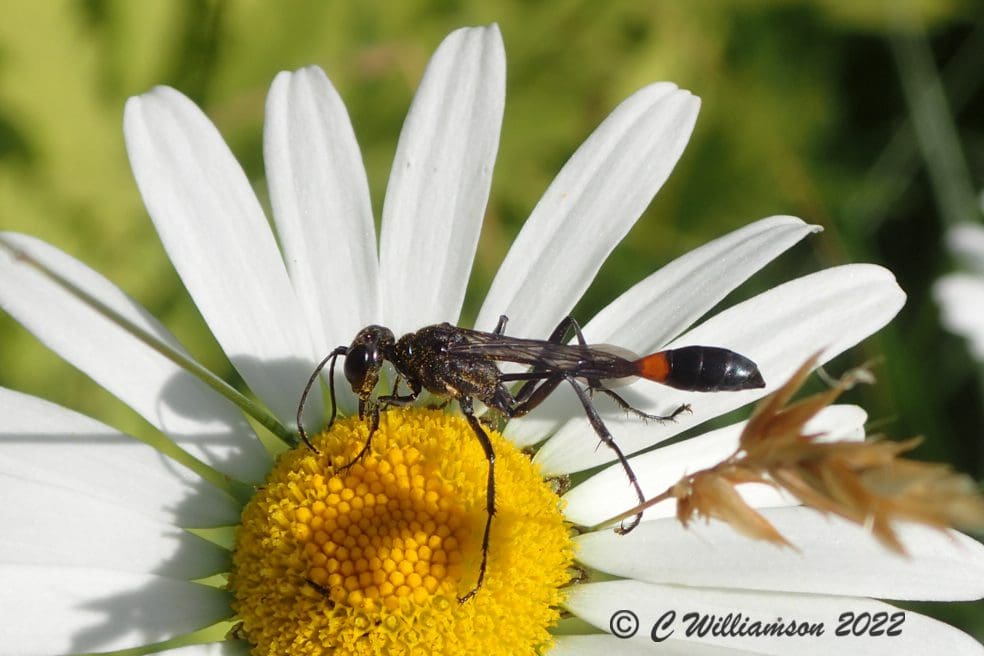
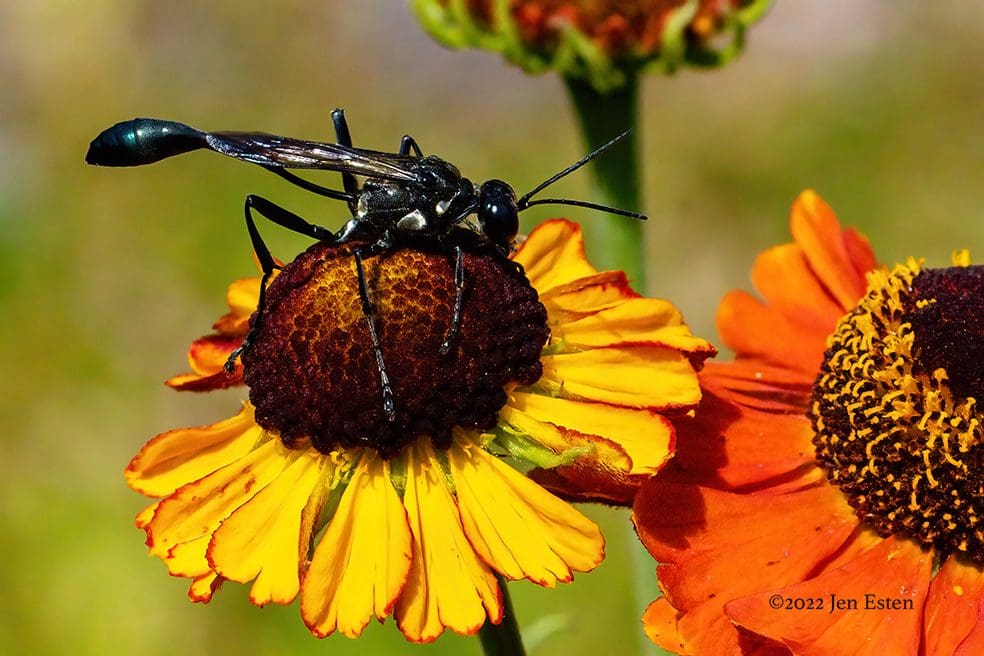
Since both sexes need to come to flowers to feed, they can often be found mating there.
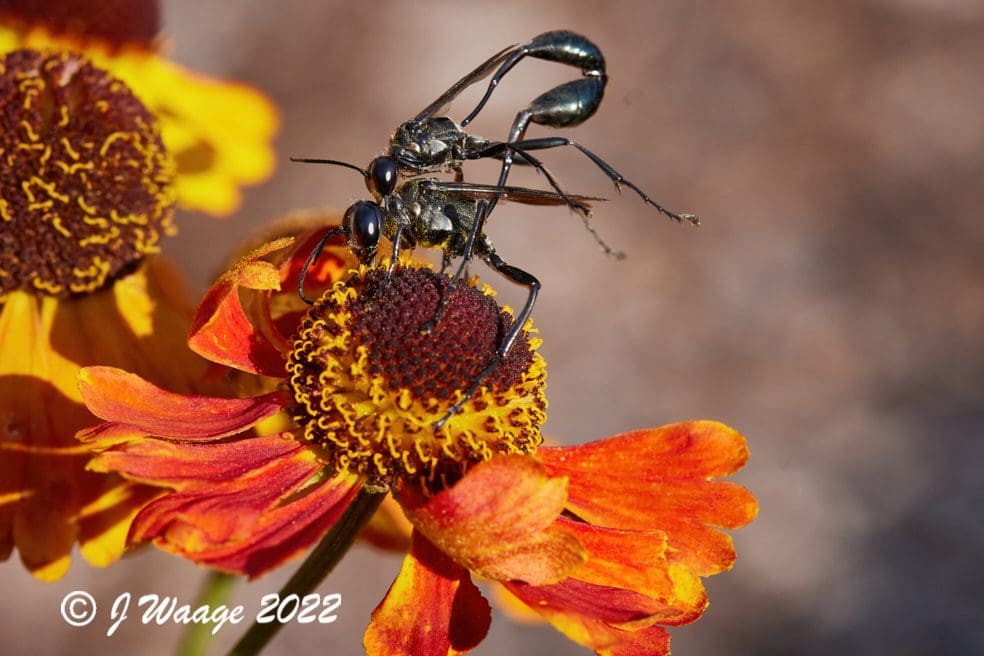
They are called Sand Wasps for a very good reason. They prefer sandy areas where, using her jaws, a female can dig a nest hole – a tunnel several inches to a foot into the ground.
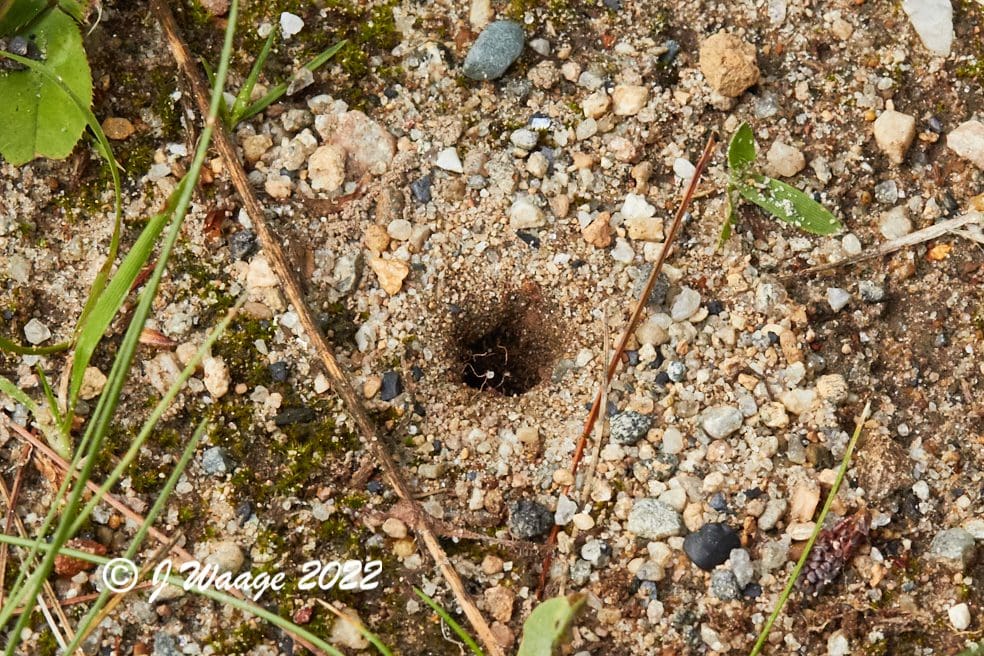
The female will excavate and then cover or hide her nest hole and fly off to find a caterpillar. Usually it is a Prominent Moth caterpillar. This very large group of moth species eat the leaves of many local trees and shrubs, sometimes defoliating them. The caterpillars are often large in size.
Once found, the caterpillar is stung in several places to paralyze its mouth parts and legs. Then the wasp must get the caterpillar back to its nest. But how? Given the size of the prey, most of the time they can’t just fly back with it.

Instead, they hold it in their jaws and drag it back to the nest with their long legs.
How these wasps find their hidden nest hole is the subject of many fascinating studies. We know they have a built in sun compass and the ability to remember landmarks around the nest. Still, carrying a large caterpillar dozens if not hundreds of yards through vegetation to a hidden nest is quite a feat!

Once at the nest (above), the entrance is opened and the caterpillar is pulled down into a chamber at the end of the tunnel and an egg is laid on it.
The female then carefully covers (below) and hides the nest entrance again before going off to dig another nest tunnel. But, why hide the nest so well?

The answer is that there is another parasitic insect looking to find the nest and caterpillar for its own eggs. Below is a small parasitic fly that has arrived at the nest. All of the work of the wasp is lost if that fly can find a nest and get down to the caterpillar since it will lay dozens of eggs on the wasp egg and caterpillar.
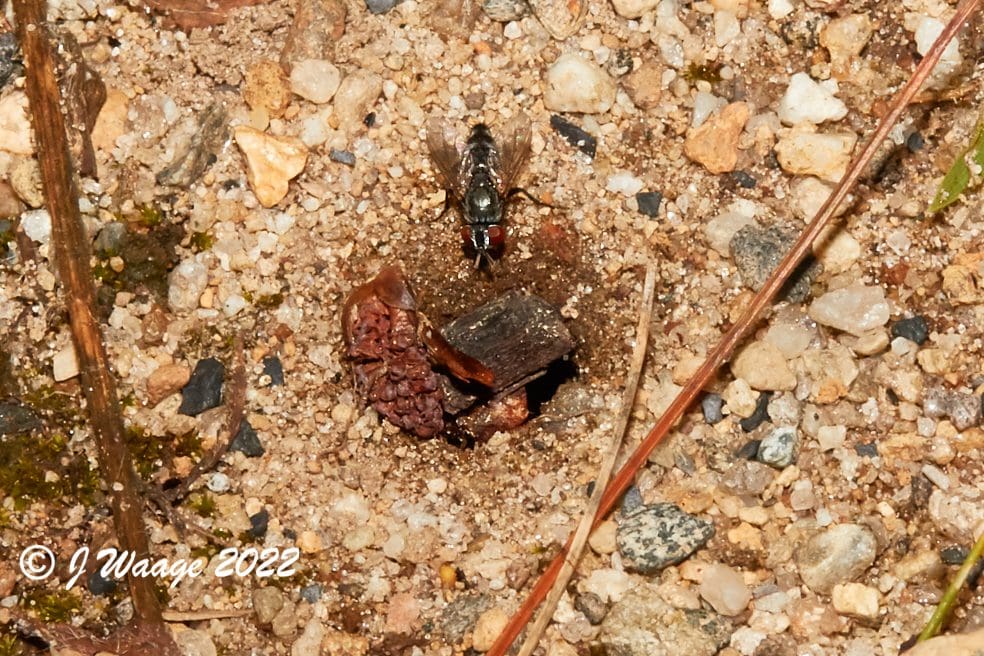
If you would like to learn more about Sand Wasps, here is an excellent place to start.
One final example will bring home the scale of insect removal by wasps. Craig Williamson, who has provided some of the photos for this newsletter, discovered a mason wasp nest between two stones in his yard. Mason Wasps belong to a group of Vespid Wasps that build nests of mud.
Below you can see what is essentially a cutaway view of that nest. It has seven cells with offspring at various stages and their paralyzed prey.
Starting at the bottom right, you can see several insect larvae and the single egg the female has laid on top of them. She will add more prey and seal the chamber. In the row of three chambers above the wasp you can see wasp larvae of increasing size from right to left. The top two cells contain a larva (right cell) about to pupate, having eaten all the paralyzed larvae. The final cell with silky fibers visible is the pupal stage of the wasp.
Dozens of insect larvae (possibly beetle larvae) will have gone into making seven new Mason Wasps.
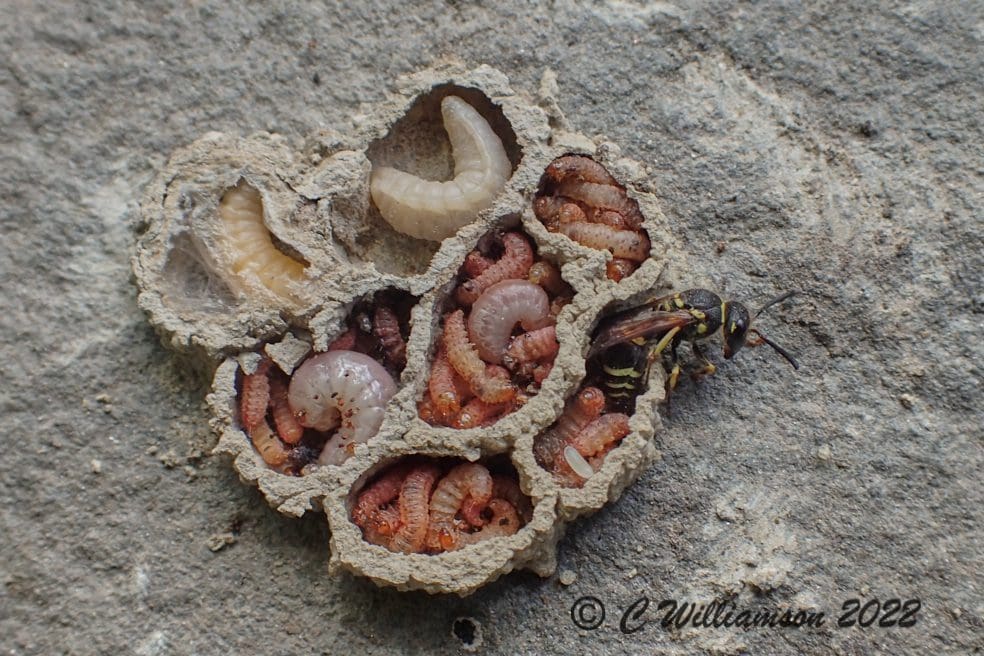
That is a lot about wasps, but knowing there are tens of thousands of helpful species for every potentially harmful one hopefully will help us all be more tolerate of them in our yards.
Bye for now …from Mom showing off her bands
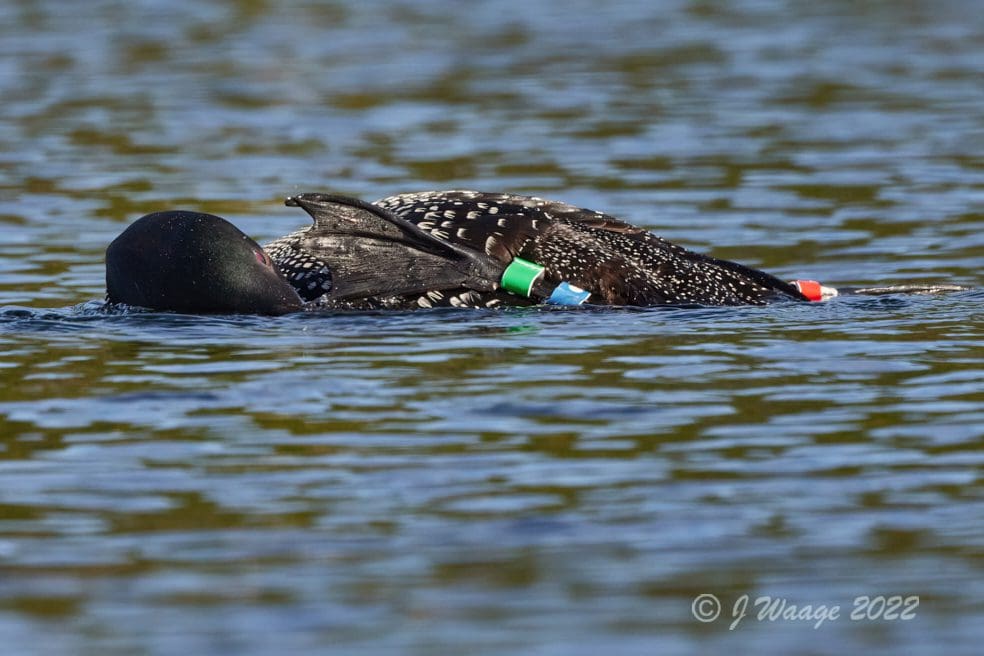
Bye for now …from Mom showing off her bands
Text and Photographs by Jen Esten and Jon Waage

